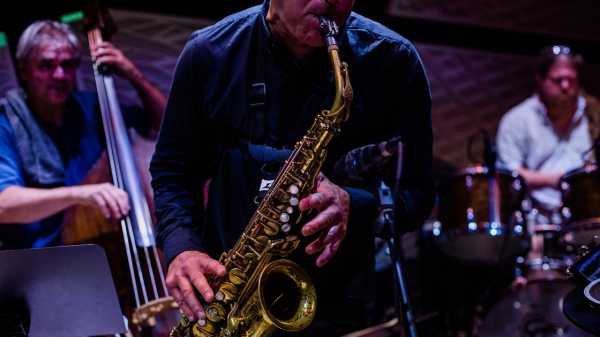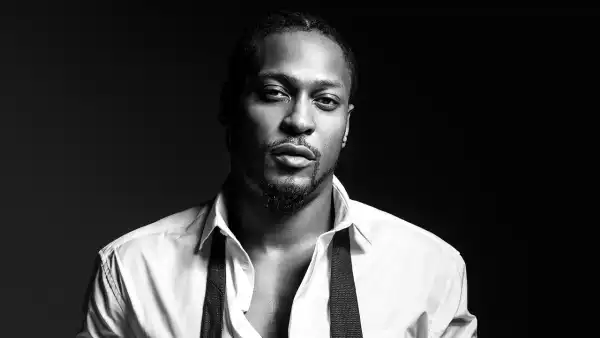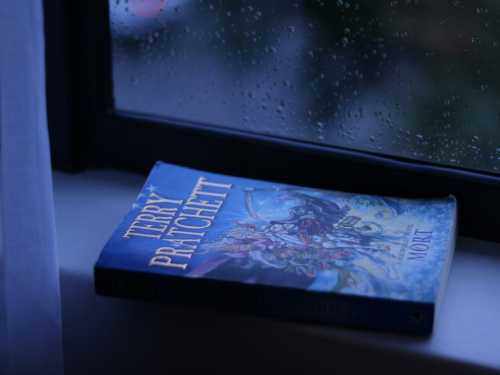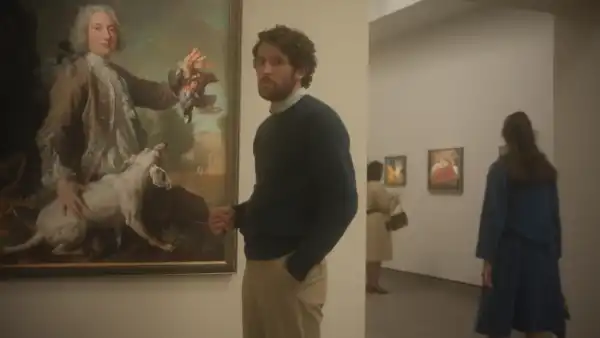
The first jazz album I bought was John Coltrane’s “Interstellar Space.” At the time (I was a teen-ager), I knew almost nothing about jazz, beyond typically clichéd impressions that it was contemplative, grownup music, and people always seemed to be romantically snapping their fingers, ecstatically bopping their heads. An impulse purchase, “Interstellar Space” was something else entirely. I didn’t get it. I couldn’t follow its surging, sputtering turns; I could only feel its liberated chaos, an overwhelming brightness that felt like a staring contest with the sun. The compositions seemed entirely free of structure, and the musicians were playing everything wrong, but on purpose. The intensity was almost unbearable. At times, Coltrane and the drummer Rashied Ali seem frustrated with their instruments, maybe even with the limitations of their own bodies. Coltrane’s melodies swell into overblown squawks and blasts, Ali searches for sound from every centimetre of his drum kit. They were in a hurry, and I did not understand where they were trying to go.
Recorded a few months before Coltrane died, in 1967, “Interstellar Space” was not a very well-advised introduction to jazz. But I had bought it, which, in the nineties, meant that I was stuck with it, so I continued listening to it, trying my best to make sense of why this CD, which sounded a bit like a toddler’s birthday party, made me feel so panicked. Someone soon gave me a collection of Miles Davis ballads from the fifties, which were gorgeous, and I travelled back and forth through history from early Miles past late Coltrane. But knowing how the story would turn out made me a fitful student. I knew that the music would shed some of its tightly wound splendor and grow boisterous, noisy, questing toward different ends. In the late fifties and sixties, as giants like Coltrane, Eric Dolphy, Ornette Coleman, and Albert Ayler ranged further from the techniques and traditions they had mastered, they began to rethink what they could express through their instruments. Their music adapted to changing times—radical politics, new forms of self-discovery and technology. At a time when black communities were rethinking what it meant to be free, or to pursue justice, and when that day would arrive, jazz’s approach to time, rhythm, and the meaning of “now” changed, too.
In the seventies, young musicians enthralled by the new, collaborative possibilities of “free jazz” and avant-garde experimentation began moving to New York, where rents were cheap, loft spaces abundant, and zoning codes rarely enforced. In 1973, the pianist Gene Ashton (now known as Cooper-Moore) and some other musicians found a four-story building at 501 Canal Street, on the west side of Manhattan. The saxophonist Alan Braufman, a friend from Berklee College of Music, in Boston, soon joined him. On Friday nights, they would set up some folding chairs and open the doors to anyone who wanted to come, listen, and join their excursions.
The mid-seventies “loft-jazz” scene was notably documented in “Wildflowers,” a set of recordings made at Studio Rivbea, a well-known performance space run by the musician Sam Rivers and his wife, Beatrice. (A personal favorite is Hamiet Bluiett’s “Tranquil Beauty,” which sounds like an old-fashioned standard unwound to tatters.) But the city was filled with smaller, ad hoc communities that convened for a night or a season and are barely remembered at all. The only document of what happened at 501 Canal Street came in 1974, when Braufman, Cooper-Moore, the bassist Cecil McBee, the percussionist Ralph Williams, and the drummer David Lee recorded “Valley of Search” for an independent label called India Navigation. The album offers a snapshot of the era’s fixations. The first sound you hear is Cooper-Moore’s fidgety dulcimer; in the background, McBee solemnly saws away at this bass. Braufman, playing the flute, enters into the space slowly; he almost sounds too pretty for the scene. But then he begins channelling Pharoah Sanders’s astral voyages with his saxophone, his runs growing increasingly jagged. A groove emerges from the din, the dense layers of percussion. It feels as though they’ve got somewhere. But then, with some scribbles and a squawk, it dissolves, giving way to a dexterous bass solo, or a drone, and they’re chasing another vision. This time, it’s a track called “Little Nabil’s March,” a festive stomp in which Braufman’s caterwauling sax is punctuated by over-the-top whistles.
“Valley of Search” was reissued in late June by Braufman’s nephew, Nabil Ayers, for whom “Little Nabil’s March” was named. Ayers recently wrote a tribute to his uncle, and the Canal Street loft space. Despite his fondness for his childhood, parts of which were spent goofing around with his uncle at his jazz colony, Ayers writes that the loft wasn’t a place to be wholly romanticized. Music was an escape, at least for hours at a time. Braufman and his band, like many musicians of the time, were searching for transcendence. They had mastered their chops, and now they wanted the music to take them somewhere else.
A couple of weeks ago, Braufman and Cooper-Moore reunited to play “Valley of Search” at National Sawdust, an impressively designed venue in Brooklyn that looks like the inside of a cracked egg. They were joined by local players: James Brandon Lewis, on tenor sax; the bassist Ken Filiano; and the drummer Andrew Drury. Braufman said that he had to re-learn the material, since it was no longer part of his repertoire. “Valley of Search” was his lone album. Braufman went on to play as a touring musician with Carla Bley and the Psychedelic Furs. He now lives in Salt Lake City, where he plays more traditional fare as Alan Michael.
It was captivating, watching the way their bodies responded to the music and to each other. Stretches that sound dense and chaotic on a recording reveal themselves to be careful and collaborative, everyone listening closely to whomever is soloing, guiding one another through the swells of noise with a quick nod. I couldn’t stop watching Cooper-Moore, who hammered at his piano with a kind of punishing devotion. Sometimes it looked like he was keeping time by chewing. His jaw swung as though it was unhinged, as though it was trying to fly away from the rest of his face. By night’s end, Braufman looked exhausted. He thanked Cooper-Moore, and the pianist returned a dazed, blissed-out smile.
The opening act that night was Brooklyn’s Standing on the Corner, a self-proclaimed “art ensemble” with a playful relationship to genre, in that it sometimes sounds like it is playing every kind of music at once. The group’s albums and shows often sound like field recordings from a vanishing city: spiritual jazz freakouts give way to stretched-out sweet soul ballads; a riot of sirens, air horns, and stuttering drum machines dissolve into feverish street-corner manifestos, chants about delayed trains and stalled romance. It all feels mystical, built on echo and intuition, unfolding like a dream.
On this night, the ensemble consisted of Shamel Cee Mystery (stylized as $H✸M彡L (o) ?), who sang and played percussion; the saxophonist Caleb Giles; the guitarist Jack Nolan; the bassist Oluwaseun Odubiro, a drummer named Buz, and Tomin Perea Chamblee, who played cornet and alto clarinet. They played underneath a projection of black heroes, such as Alice Coltrane and Malcolm X. In the middle of the stage, often obscuring Odubiro and Nolan, was a homemade, black monolith that stood about ten feet high.
For decades, jazz aficionados have worried that the art form is imperilled. It feels particularly out of step with the immediacy of pop music, and the ability these days for collaborators to build epic hits by sending digital bits and pieces of song around the world. But the idea of young musicians coming together, mastering instruments, and rehearsing has never really gone away. Lately, artists fluent in—and oftentimes raised on—dance, hip-hop, or punk have brought new audiences to jazz by making those connections a bit more explicit. Earlier this year, a compilation called “We Out Here” documented London’s D.I.Y. jazz scene. In June, the saxophonist Kamasi Washington, whose music is often seen as an analogue to Kendrick Lamar’s, released “Heaven and Earth.”
I remain most enthralled by Standing on the Corner, a community of early-twentysomethings who seem less interested in the past as a sound than as an energy. They ended with a song about the subway. The kind of musical freedom on display was different than “Interstellar Space” or “Valley of Search.” The band slowly filled in the space around a single, clinking bottle: flickers of horn, blankets of percussion, a striding bass line, shards of guitar. The groove started off so rickety and slow, but it was going somewhere sheltering and mysterious, and you could come, too.
Sourse: newyorker.com






